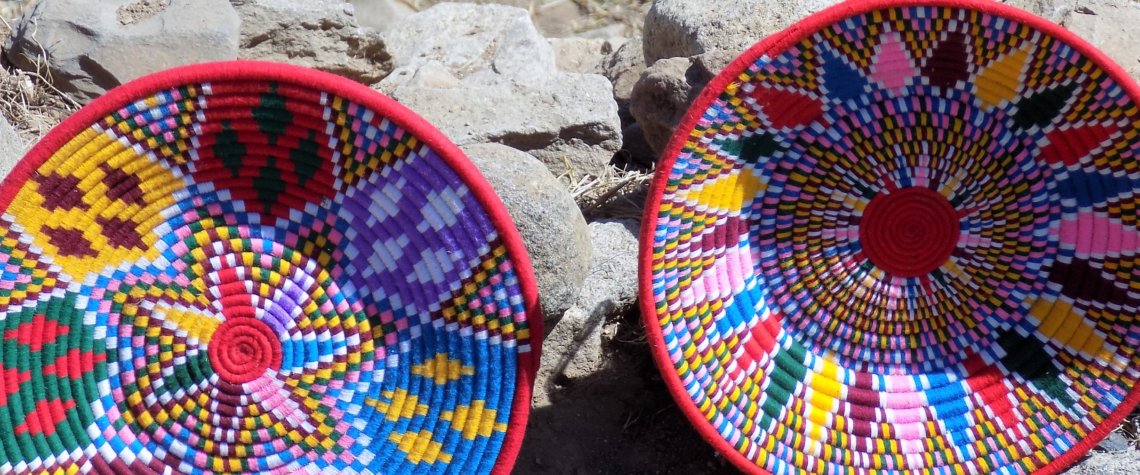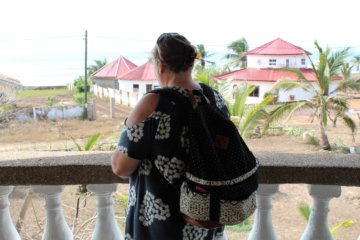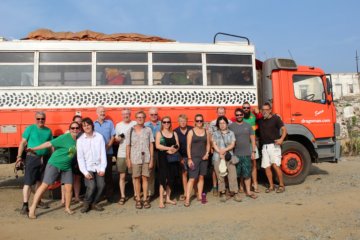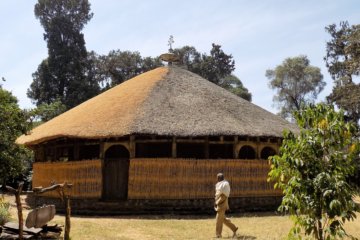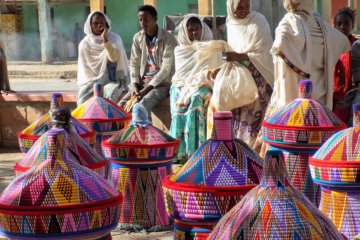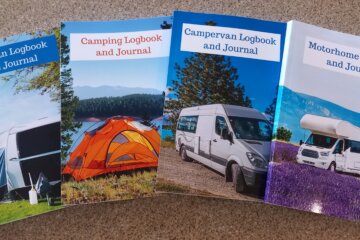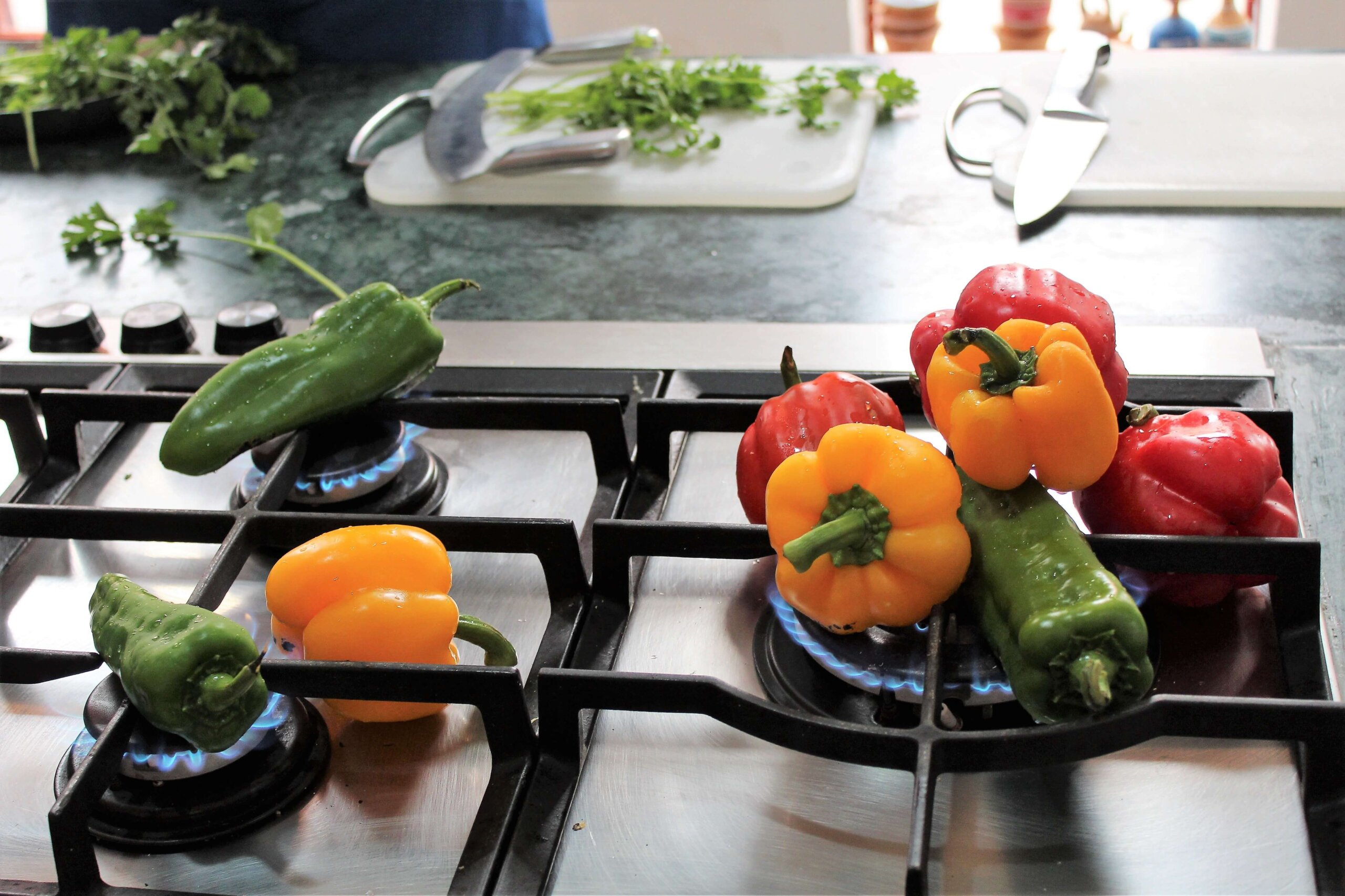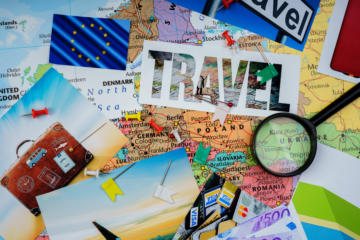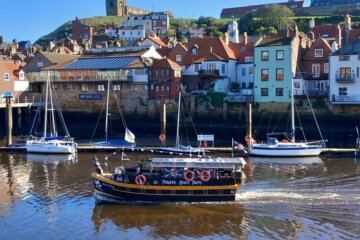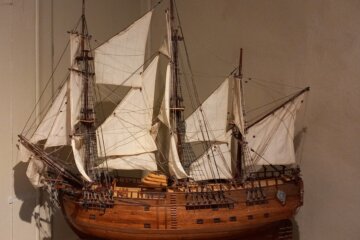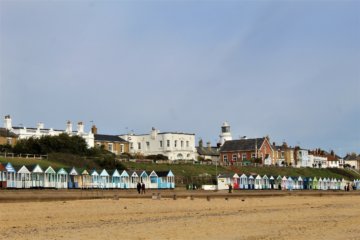Welcome to my Ethiopia travel guide!
UPDATE – APRIL 2024 Sadly, the current advice is not to travel to large areas of Ethiopia due to the political situation. I leave this guide here for when things stabilise. This nation is one of the best places we have visited, and when things return to normal, the people are going to need us to visit more than ever!
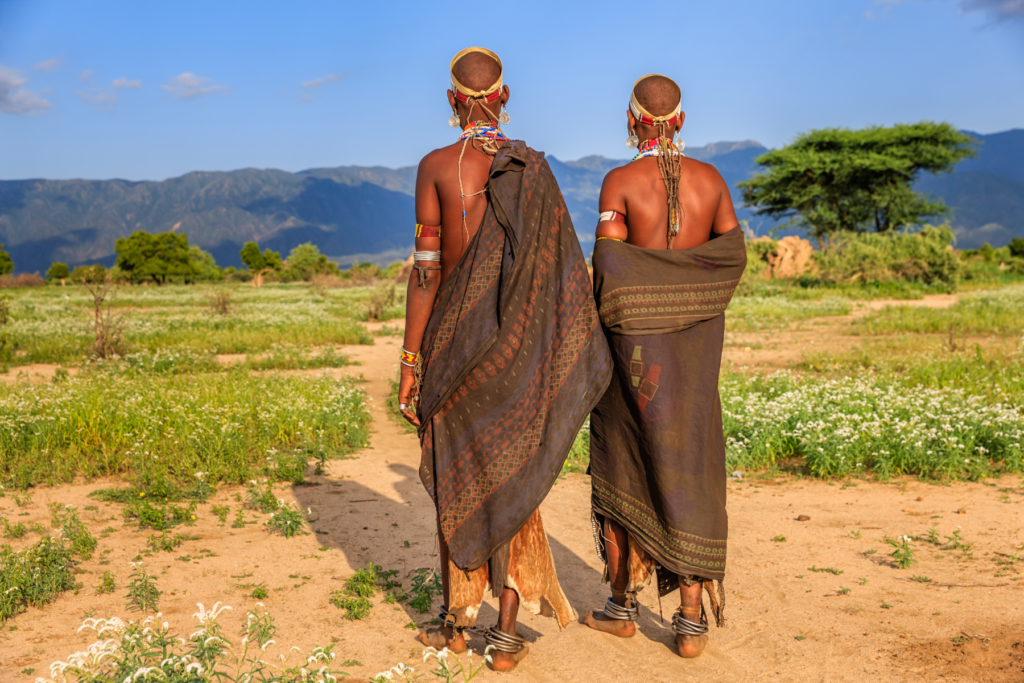
The mesmerizing land of Ethiopia, nestled in the heart of the Horn of Africa, is one of the most interesting, exciting, and memorable destinations we have visited in recent years. With this guide, I hope to inspire you to travel to Ethiopia yourself. This is a country steeped in ancient mystique, vibrant culture, and breathtaking landscapes that beckon adventurers, history buffs, and culture aficionados alike. It is the birthplace of humankind – and of coffee!! How could you not want to go there?
There are rugged mountains covered in lush greenery, bustling markets brimming with exotic wares, and cities pulsating with a uniquely Ethiopian rhythm. From the towering peaks of the Simien Mountains to the ancient rock-hewn churches of Lalibela, Ethiopia is a tapestry of wonders waiting to be explored. Whether you seek adrenaline-pumping adventure tourism amidst the rugged terrain, immersive cultural experiences that unravel the tapestry of Ethiopian heritage, captivating wildlife photography opportunities in its diverse ecosystems, a glimpse into the annals of time through historical sightseeing, or a tantalizing gastronomic exploration of its aromatic cuisine, Ethiopia promises a kaleidoscope of experiences that will leave an indelible mark on your soul.
Read on for the practical tips you need before you go, what to expect when you get there, and the must-see sights.
In this article
Our Ideas About Ethiopia Before We Went
When most of us in the West think of Ethiopia (myself included, before we went there), we think of famine and war, and nothing else. For those of us of a certain age, our awareness and knowledge of the country come from those dreadful images of starving people brought to us via news reports in the mid-1980s. Those horrific pictures, especially the ones of dying children, haunt us to this day and, at the time we first saw them, they galvanised us into action, donating money to Live Aid and buying the iconic ‘Do They Know It’s Christmas?’ single.
In the years that followed, our perception of Ethiopia was formed by more news images, this time of war with Eritrea.
For the 20th anniversary Live 8 in 2005, we were presented with a glimmer of hope in the form of Birhan Woldu, the little girl who was photographed when she was minutes from death in 1984 and whose plight had touched all of our hearts. She appeared on stage with Bob Geldof as a beautiful and healthy young woman and he told us that what we had done all those years previously had worked, we had succeeded … BUT it wasn’t enough. The fight had to continue. People were still dying from lack of food and medicine. We must carry on helping wherever and whenever we could. If anything, the idea of Ethiopia as a famine-ridden, war-torn country was strengthened.

So, it was with some trepidation that we started planning our trip. I was heartened, however, to read in the Lonely Planet guidebook to Ethiopia, Djibouti, and Somaliland that Ethiopia is ‘one of the few countries left in the world that has the capacity to make you go ‘wow’ every day!’ And so it proved!!
Essential Information Before You Visit Ethiopia
Visas
Travellers from all countries except Djibouti and Kenya require a visa to enter Ethiopia. If you are arriving at Addis Ababa (Bole) International airport, you can buy an e-visa in advance from the Ethiopian Immigration website. Alternatively, you can obtain a tourist visa on arrival. The cost for either of these options is $US50 for one month and $US75 for three months. If purchasing at the airport, make sure you bring US dollars in cash.
If you are arriving in Ethiopia via any other port of entry, or if you require any other category of visa, you must get your visa in advance from your nearest Ethiopian Embassy.
In all cases, your passport should be valid for a minimum period of 6 months from the date of entry into Ethiopia. Make sure you have two blank pages in your passport on arrival.
Vaccinations for Ethiopia
You should seek medical advice eight weeks before travelling to Ethiopia.
These vaccinations are recommended for all travellers:
- Hepatitis A
- Polio
- Tetanus
- Typhoid
Travellers in high-risk groups may also require:
- Cholera
- Hepatitis B
- Meningococcal Disease
- Rabies
- Tuberculosis
Yellow Fever
All visitors over 9 months of age arriving from countries with risk of yellow fever transmission need to have a yellow fever vaccination certificate, as do travellers having transited for more than 12 hours through an airport of a country with risk of yellow fever transmission.
Malaria
Malaria is common in areas of the country below 2,000 metres above sea level. Addis Ababa sits at 2,400 metres, but a number of sites popular with tourists are below 2,000 so the taking of anti-malarial medication is recommended.
Capital City
The capital and largest city of Ethiopia is Addis Ababa. It has a population of around three million and is home to the African Union, giving rise to the city’s nickname of ‘the political capital of Africa’.
Time Zone
The time in Ethiopia is GMT +3.
Language
Amharic is the official national language of Ethiopia, although it is only spoken by about 29% of the population. There are 88 individual languages in the country of which the most widely spoken is Oromo, used by 34% of the people. English, Arabic, Italian and French are also commonly heard.
Hello in Amharic is ‘Selam’ and is the standard greeting throughout Ethiopia.
Money Matters
The local currency is the Ethiopian Birr (ETB).
100 ETB = €3.10/£2.70/$US3.50
ATMs are available in the main Ethiopian cities, but it is still wise to bring plenty of cash. US dollars are the preferred foreign currency, although euros are also easy to change. Traveller’s cheques are not accepted anywhere and you will find credit cards are largely useless outside of the large city hotels.
Ethiopian Holidays
- Ethiopian Orthodox Christmas – January 7
- Adwa Victory Day – March 2
- Orthodox Easter – March/April
- Labour Day – May 1
- Patriots’ Victory Day – May 5
- Derg Downfall Day – May 28
- Eid al-Fitr – c May 23, 2020
- Eid al-Adha – c July 30, 2020
- Enkutatash – September 11, 2020
- Meskel – September 28, 2020
- Mawlid – c October 28, 2020
Electricity in Ethiopia
The supply is 220V and plugs are of type C, E, F and L. Don’t forget to pack a universal travel adaptor. Power cuts are frequent, so take a torch! We usually take two – a head torch and a flashlight with a hanging hook and a magnetic base.




Safety
It’s important to check the most up-to-date advice issued by your government before travelling to Ethiopia. Currently, the British government advises against all travel to certain districts in the east of the country and border areas in the south-east.
The vast majority of tourist visits to Ethiopia are trouble-free. However, it’s important that you take the same precautions you would anywhere.
- Try to always tell someone where you are going.
- Don’t walk alone after dark.
- Stick to well-lit areas.
- Know the number for emergency services (911 is the general emergency number in Ethiopia – or you can dial 991 for the police, 907 for an ambulance, 939 for the fire brigade, and 945 for the traffic police).
- Lock your valuables in a hotel safe where possible and only carry a small amount of cash. If you need to carry more, use a money belt.
Telephone
All Ethiopian numbers have 10 digits. If calling an Ethiopian number from within the country, you’ll need to dial the three-digit area code as a prefix to the number.
The international country code for Ethiopia is 251.
Mobile numbers begin with ’09’.
All mobile phones are operated by Ethio Telecom. Whether you’re using your home phone on a roaming plan or a locally bought phone and SIM card, expect connection problems, although the situation is improving.
The Best Time to Visit Ethiopia
Ethiopia has a tropical climate with an annual average temperature of 27 degrees.
High Season
The best time to visit Ethiopia is between January and March. This is the dry season with sunny skies and warm days. Be aware, though, that temperatures in the mountains can still fall to freezing point during the night so bring warm clothing and an all-weather sleeping bag if you’re camping.
This time of year is best for wildlife watching in the national parks and it is also when you will see Ethiopia’s most colourful festivals, including Timkat and Leddet.
Shoulder Season
From October to December, the weather is sunny, but the daytime temperatures are slightly cooler, making it the perfect time for trekking. There are fewer visitors, too, so expect to have lots of tourist attractions to yourself.
There are masses of wildflowers in bloom in October. In November, you can enjoy the spectacle of the arrival of millions of birds for the winter.
Low Season
April to September is the rainy season, particularly in the south of Ethiopia. In the lowlands, temperatures can reach a scorching 40 degrees, making travel uncomfortable. It is often overcast during these months meaning that it’s difficult to spot wildlife in the parks.
What to Pack for Ethiopia
Clothes
Casual, comfortable clothes are best for travelling in Ethiopia. You will rarely have cause to ‘dress up’. Pack lightweight cotton layers in light, neutral colours, but not white as you will get dusty and dirty very quickly. Avoid blue or black as these colours attract the tsetse fly.
Ethiopia’s tropical climate makes the need for a coat redundant, although a rain jacket is essential in the wet season. If you are going to be at altitude in the national parks, a fleece is a good idea. You should take walking shoes or boots as there are lots of opportunities to go hiking and trekking.
Women should dress modestly so as not to draw too much attention to themselves. Don’t forget a hat and sunglasses.
Other
- Travel documents
- Money and cards
- A first aid kit
- Personal medication
- Anti-malarials
- Insect repellent – we took one with 50% Deet which worked very well
- Sunscreen and after-sun
- Camera equipment
- Binoculars
- Swiss army knife
- Water filter bottle – we swear by these! We no longer have to buy plastic bottles of water when we travel.
- Personal entertainment – music, reading material, playing cards
- Journal and pens
- Reusable shopping bag to reduce the amount of plastic you use
- Toiletries
- Travel towel for those impromptu waterfall swims!
- Sewing kit
Getting to Ethiopia
The vast majority of travellers arrive in Ethiopia by air at Addis Ababa, but for those with time and a spirit of adventure, it’s possible to enter Ethiopia overland via Sudan, Kenya, Djibouti and even Somaliland. There are no land or air links between Ethiopia and Eritrea. Borders with South Sudan and the rest of Somalia are either closed and/or dangerous.
By Air
Several airlines fly into and out of Addis Ababa’s Bole International Airport, the only international airport in Ethiopia, but you’d be hard-pushed to beat Ethiopian Airlines. It is Ethiopia’s only international and national carrier and is rated as one of the best in Africa, with a modern fleet and a good safety record.
By Land
It is possible to enter Ethiopia overland, either in your own vehicle, by bus, or on an overland truck (our preferred method of travel in Africa!). Read this comprehensive guide from Lonely Planet for more detailed information.
Accommodation
In Addis Ababa and other big Ethiopian cities, there is a good choice of hotels, from the very basic to much more upmarket establishments. Elsewhere, you will find small hotels, guesthouses and camping grounds. We stayed in a variety of hotels during our overlanding trip (I wrote about some of them here) and we also camped in the Simien Mountains.
Some hotels were more basic than others. We rarely had running water and working electricity at the same time! Often, doors and windows didn’t open and close properly! Things were broken. Staff didn’t always turn up on time to cook and serve meals, especially breakfast – but when they did, they were invariably smiling! You just need to go with the flow and remember you’re in Africa, so don’t expect western-style facilities all the time.
Food and Drink
Injera
Injera – a delicious accompaniment to spicy Ethiopian food or a disgusting, sour-tasting substance to be avoided at all costs? Just like Marmite, injera has the power to divide opinion – you either love it or you hate it! I have to say that I fall into the latter category!
You can’t fail to come across injera within hours of arriving in Ethiopia. It is the staple food and is served at every meal. If you haven’t read about it in advance of your trip (luckily, I had!), then your first experience of it might be somewhat perplexing. Invariably, it is served rolled up and has the appearance, and, indeed, the cold, clammy texture, of a dirty grey flannel. Your initial thought would not be that you were supposed to eat it!!
Essentially, injera is a sourdough risen flatbread with a slightly fermented, tangy taste and a rubbery, open texture reminiscent of tripe. Have I sold it to you yet? It is made from flour milled from teff, a small, iron-rich grain grown only in certain mid-elevation areas of Ethiopia and Eritrea. If you have eaten injera outside of the Horn of Africa, it is unlikely to have been authentic.
Injera is made into large flat pancakes which are usually cooked on a round clay tray over an open fire. These are allowed to cool and are then used as the ‘plate’ on which various dishes are served. Extra injera is rolled up and served separately. The idea is that the diner tears off pieces of injera and uses them to scoop up the stews and salads it is served with. Once the meat and vegetable dishes are finished, the ‘plate’ on which they were presented is eaten too!
I really didn’t like injera on first tasting it. It was the texture more than the taste which put me off. Mark, though, thought it was a good accompaniment to his very spicy stew. The second time I tried it was at a traditional Ethiopian restaurant and I sort of got it when I ate it with the assortment of dishes it came with. After that, however, I just became bored of it, rather like I did with the refried beans which were served with every single meal in Mexico, and would always try to order something which didn’t involve injera in any way!
Fortunately, though, some of the group we were travelling with loved it, so we didn’t offend any of the locals by not eating their national dish!
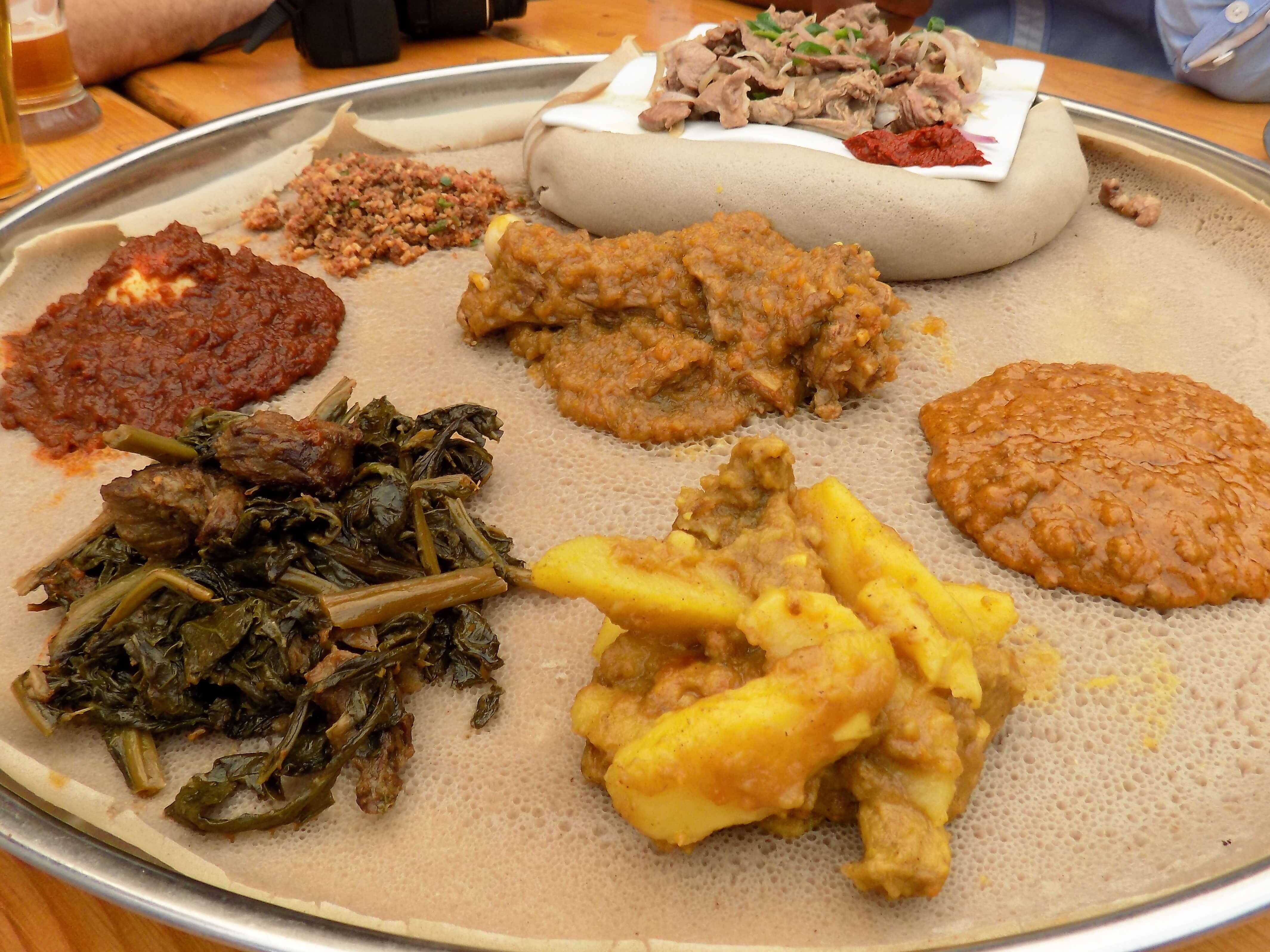
Spicy stews
Spicy stews or wats form the basis of many Ethiopian meals. The main ingredient could be beef, chicken, fish or lentils, but they all have a highly spiced tomato sauce. If you are somewhere with a menu in English, ‘key’ means spicy and ‘alicha’ means mild although, in truth, both versions might be too hot if you’re not used to spicy food. Surprisingly, you will often find a whole hard-boiled egg served in your wat!
Bean pastes
Bean pastes or shiro are homogeneous stews whose primary ingredient is ground chickpeas or broad bean meal combined with special herbs and spices. They are served with most Ethiopian meals, along with the ubiquitous injera. They are often prepared with the addition of minced onions, garlic and, depending upon regional variation, ground ginger or chopped tomatoes and chilli-peppers.
Meat tibs
Tibs are small pieces of meat, usually beef, sauteed in butter, with or without added vegetables. They are generally not spicy, making them the perfect choice for those of us who don’t have a high chilli tolerance! They became my ‘go-to’ dish during our time in Ethiopia, although I did always get Mark to try them first because sometimes they were hot enough to blow your head off!!
Raw Beef
Yes, really!! This is a really tasty choice, but make sure you only use reputable raw beef restaurants and go with someone who knows what they’re doing. I wrote about our experience in my Addis Ababa Travel Guide.
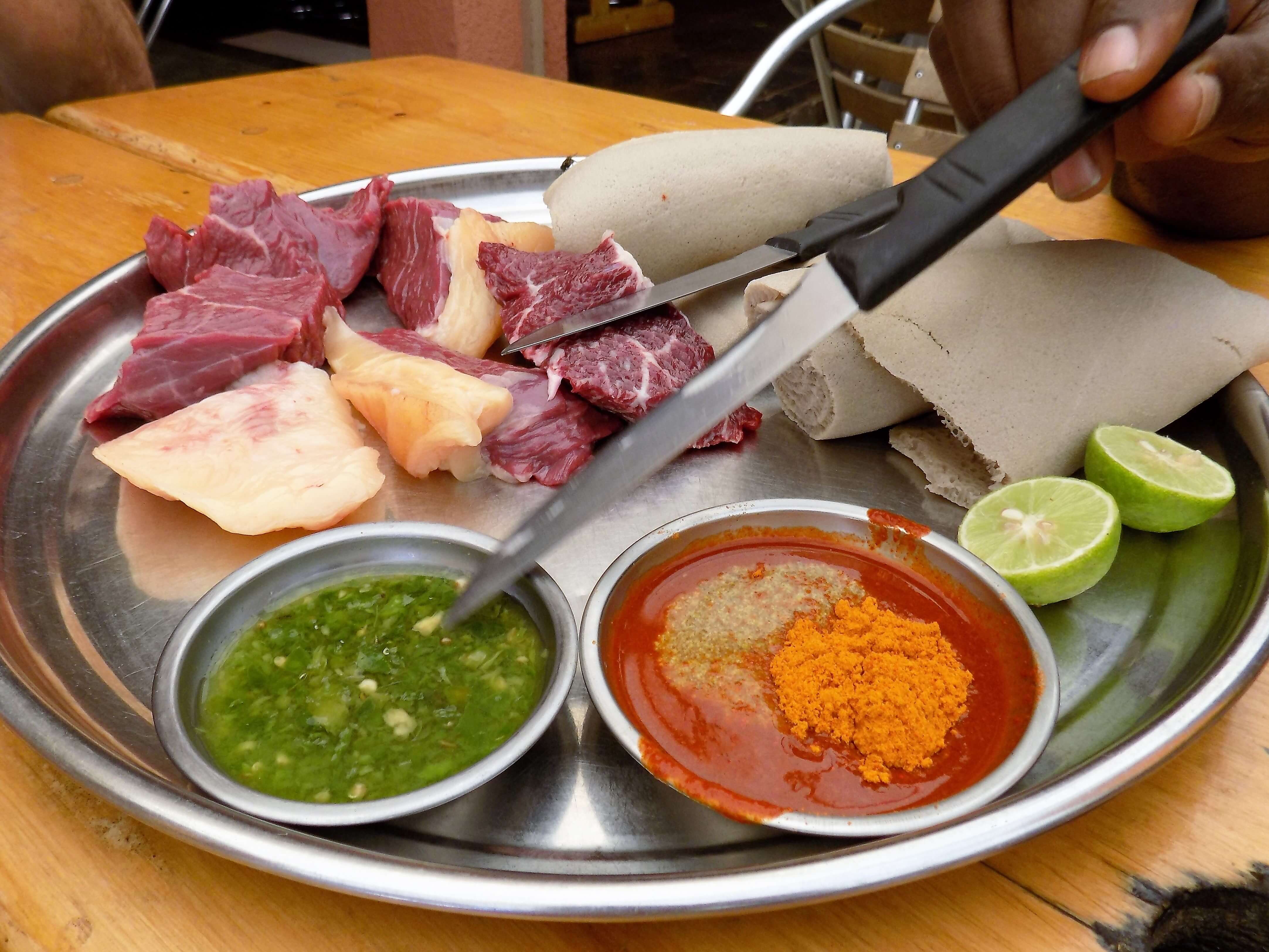
Drinks
Ethiopia has its fair share of potent alcoholic beverages, often home-brewed. They are sold from nondescript roadside huts, the only indication of what lies behind the closed door being an empty upturned bottle on a stick outside. You will surely be offered a tipple or two during your visit to the country, so you might as well know in advance what you are drinking!
Talla
This is a strongly alcoholic beer-like brew which, we were told, is made from weeds! We sampled it on Entoto Mountain in Addis Ababa. The earthy taste, sludgy sediment and dirty brown colour were quite off-putting, but Mark bravely took one for the team and downed a whole mugful!
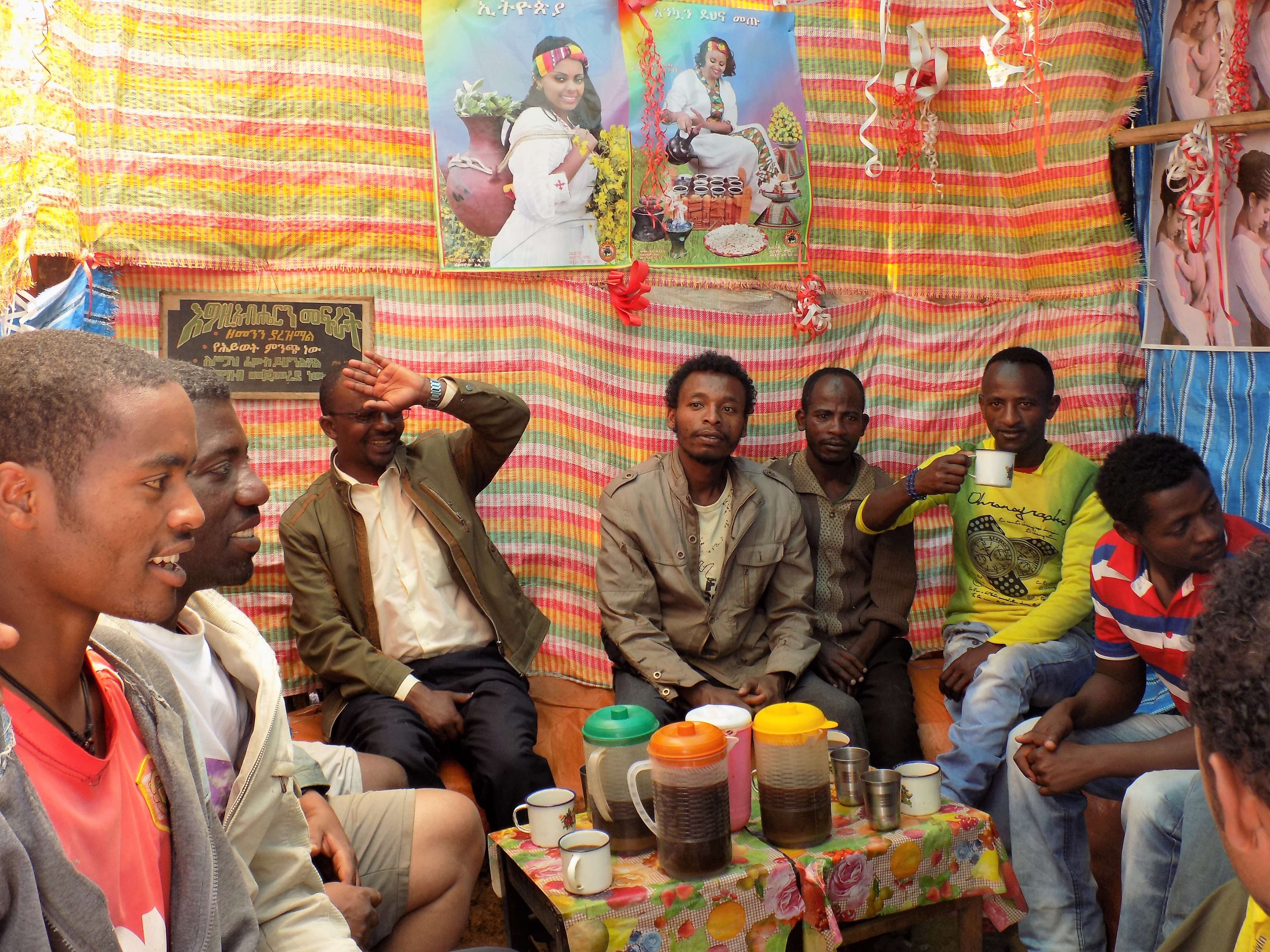
Araki
Like similar-sounding spirits the world over, araki is an aniseed-flavoured clear spirit distilled from grain. It is usually around 60% proof and tastes like a stronger version of Greek ouzo. My guess is that it would make a good substitute for paint stripper!
Tej
This is a rather delicious honey wine which formed the basis of one of our best nights out in Ethiopia! You can read about it here.
Beer
The two most common beer brands in Ethiopia are Walia, a lager-like brew, and St. George’s, a darker beer which is deceptively low in alcohol (2.5% abv on draft). Both are made by the Dashen brewery, which also produces a pure malt beer that is very popular with the locals.
Water
Bottled water, both still and sparkling, is widely available. The most popular brand is Aqua Addis. I would urge my readers to avoid these where possible, though, and use a refillable water bottle with a built-in filter instead. We always use this one from Water to Go.
Coffee
Ethiopia is where coffee was first discovered and you are unlikely to find a better brew anywhere in the world! Coffee lovers should definitely take part in at least one traditional coffee ceremony during their stay in the country. Read my article about coffee in Ethiopia.
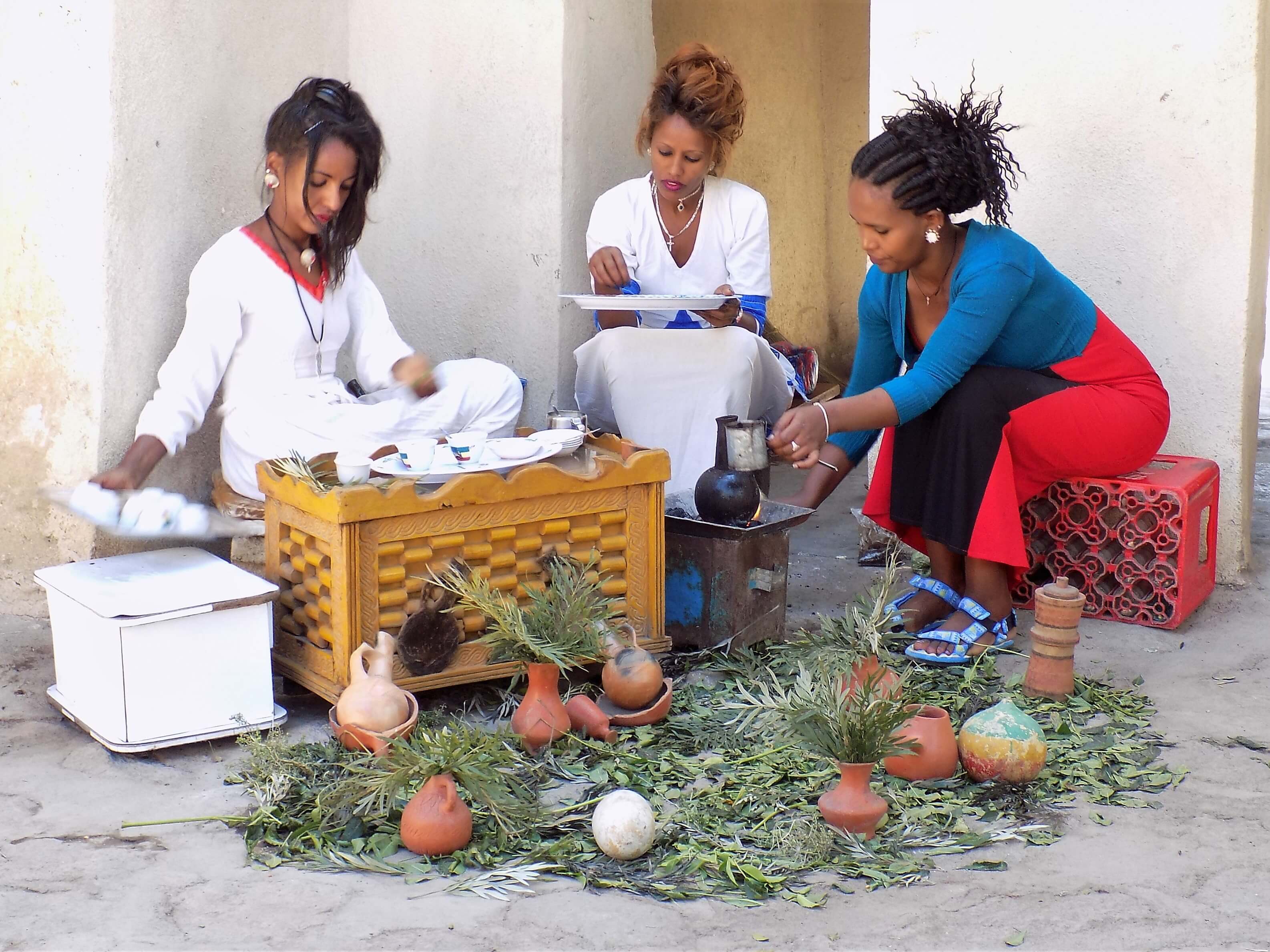
Getting Around Ethiopia
Ethiopia is a huge country and it can take a long time to get anywhere, especially in the rainy season. The mountainous terrain and poor roads make for difficult conditions, although a huge Chinese road-building project is improving the situation all the time.
Air
Ethiopian Airlines operates on many internal routes, linking Addis Ababa to Bahir Dar, Lalibela and Gondar. You will save a lot of time by flying between these cities.
Bus
There are several bus companies which offer routes between the major cities. See my guides for more information:
Car
Although it can be an expensive option, if there are a few of you travelling together through Ethiopia, it could be worth hiring a 4WD and driver/guide. Having your own car gives you the freedom to stop where you want and it saves time, too.
Places to Visit in Ethiopia
Ethiopia is such a varied land with 2500 years of documented history to explore. I’ve included a comprehensive video guide here to really whet your appetite to visit this amazing country. After the video, I’ve written my list of ‘not-to-be-missed’ places with highlights and links to more detailed articles I’ve written on each destination.
Addis Ababa
Ethiopia’s capital, Addis Ababa, is well worth a day or two of your time. If you are only visiting Ethiopia, the chances are that you will be entering the country via Bole International Airport in Addis, so you may as well stay for a couple of days to acclimatise to the altitude and explore this interesting modern city.
Don’t miss these highlights:
- The ‘Red Terror’ Martyrs’ Memorial Museum which explains the horrors of Mengistu’s Derg regime.
- Entoto Mountain from where you will get the best views of the city.
- The Ethnological Museum with its fascinating insights into the lives of ordinary Ethiopians.
- The National Museum where you can meet our ancestor, Lucy, and learn about the origins of our species.
- St. George’s Cathedral where Emperor Haile Selassie was crowned in 1930.
- Holy Trinity Cathedral where. if you wish, you can pay your respects at the tombs of Haile Selassie and British suffragette and supporter of Ethiopia, Sylvia Pankhurst.
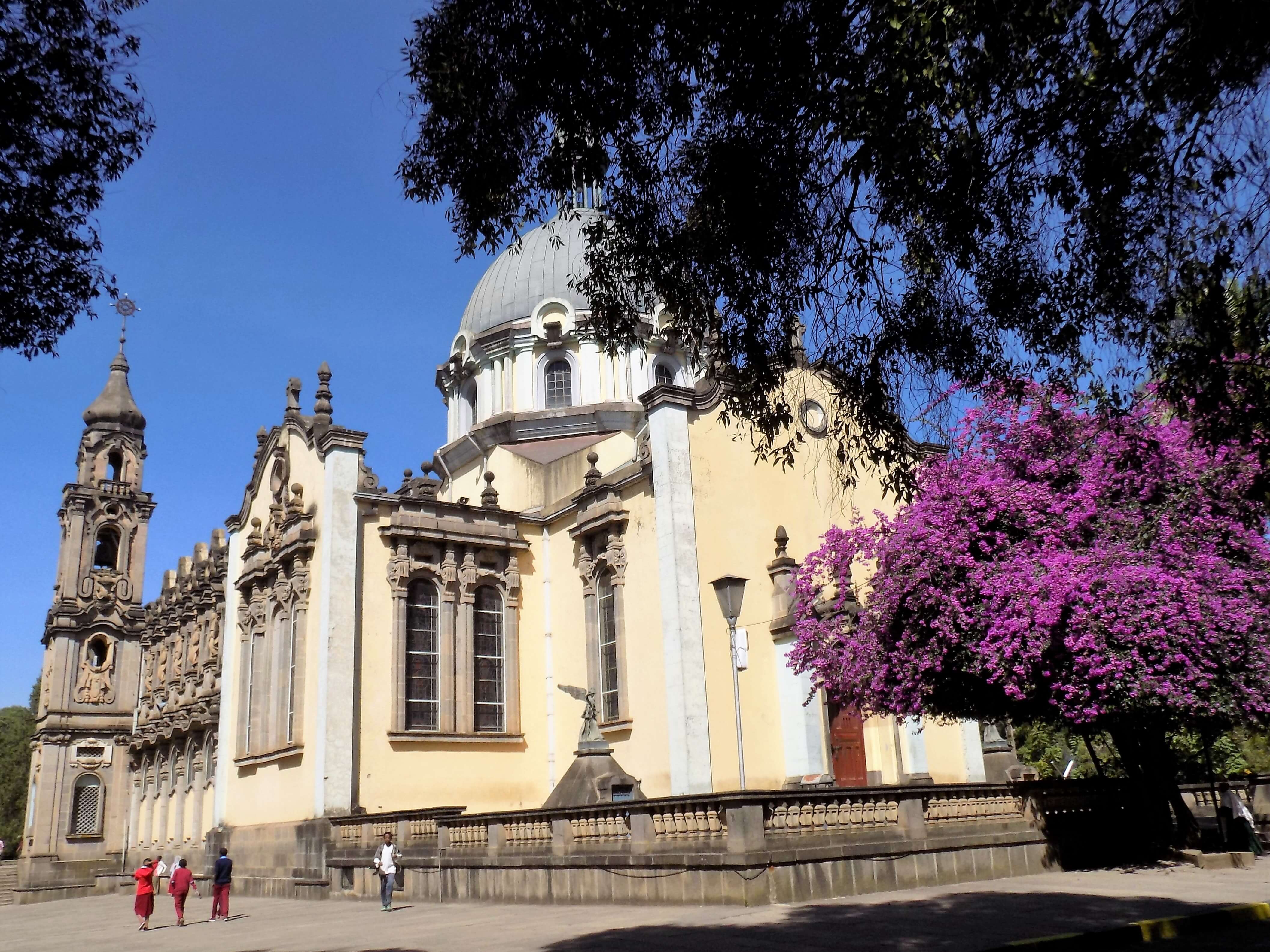
Read my full guide to Addis Ababa here.
The Rock-Hewn Churches of Lalibela
If people have an image in their head of any tourist attraction in Ethiopia, it is usually that of St. George’s church in Lalibela. The most famous of the town’s churches, hewn from solid rock, is an iconic image. It certainly doesn’t disappoint, but there is so much more to see in the town of Lalibela, the birthplace of modern Christianity. Religious or not, I defy anyone not to be blown away by the incredible feats of engineering achieved by man in praise of his God.
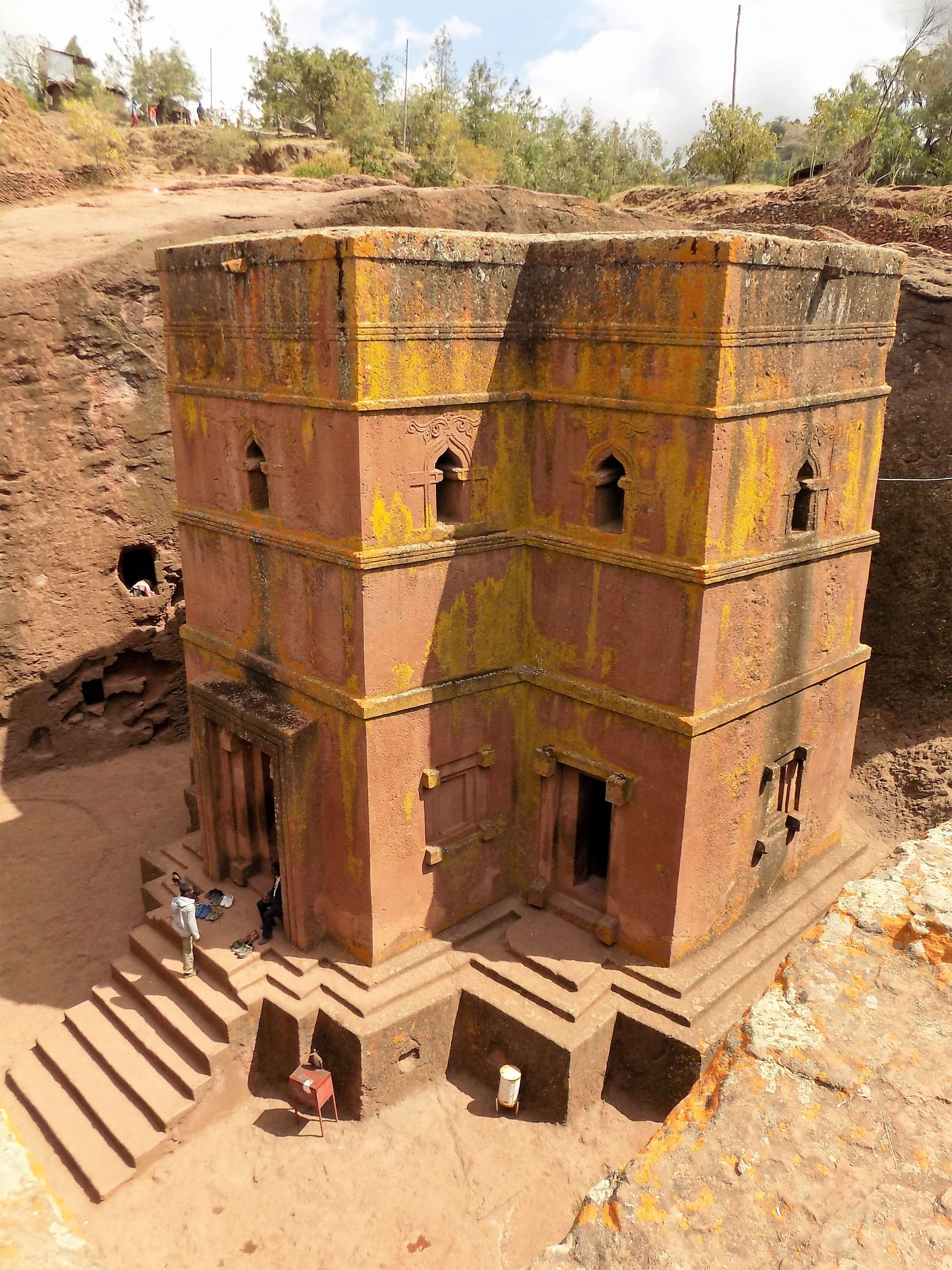
Read my complete guide to Lalibela.
Aksum’s Stellae Fields
I don’t think I even knew what a stellae field was before our trip to Ethiopia! We were amazed that these incredible obelisks were ever built and were fascinated to discover that so little is really known about them. In an age when we think we know everything, it’s refreshing to come across a mystery which still baffles the experts today.
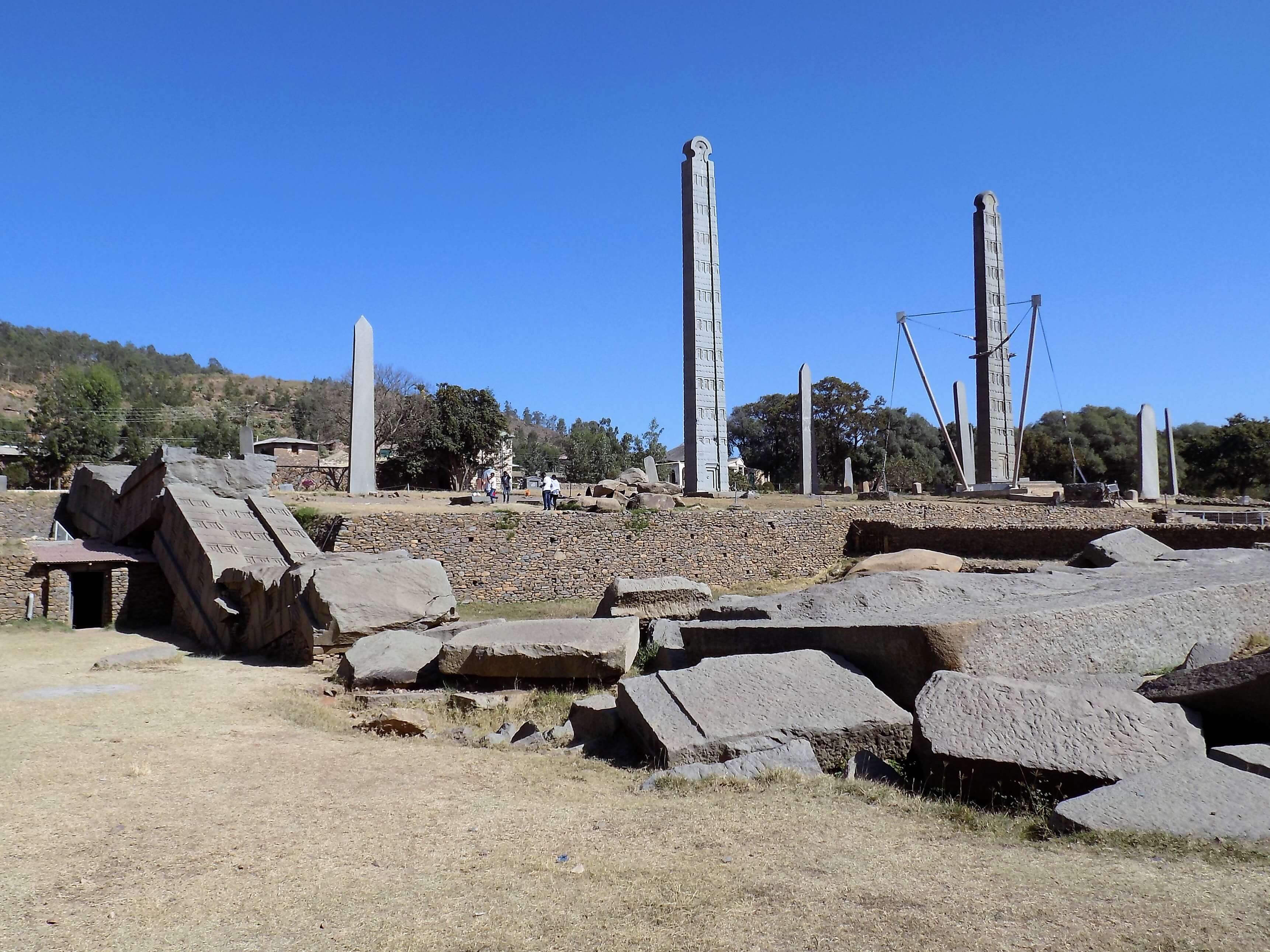
You can read my guide to Aksum here.
The Castles of Gondar
I quoted Lonely Planet at the beginning of this article in saying that Ethiopia is ‘one of the few countries left in the world that has the capacity to make you go ‘wow’ every day!’ I can’t stress strongly enough how true this is. When we got our first sight of European-style castles in Gondar, every member of our group went ‘Wow’!! Who knew that we would find castles in East Africa? Not me!!
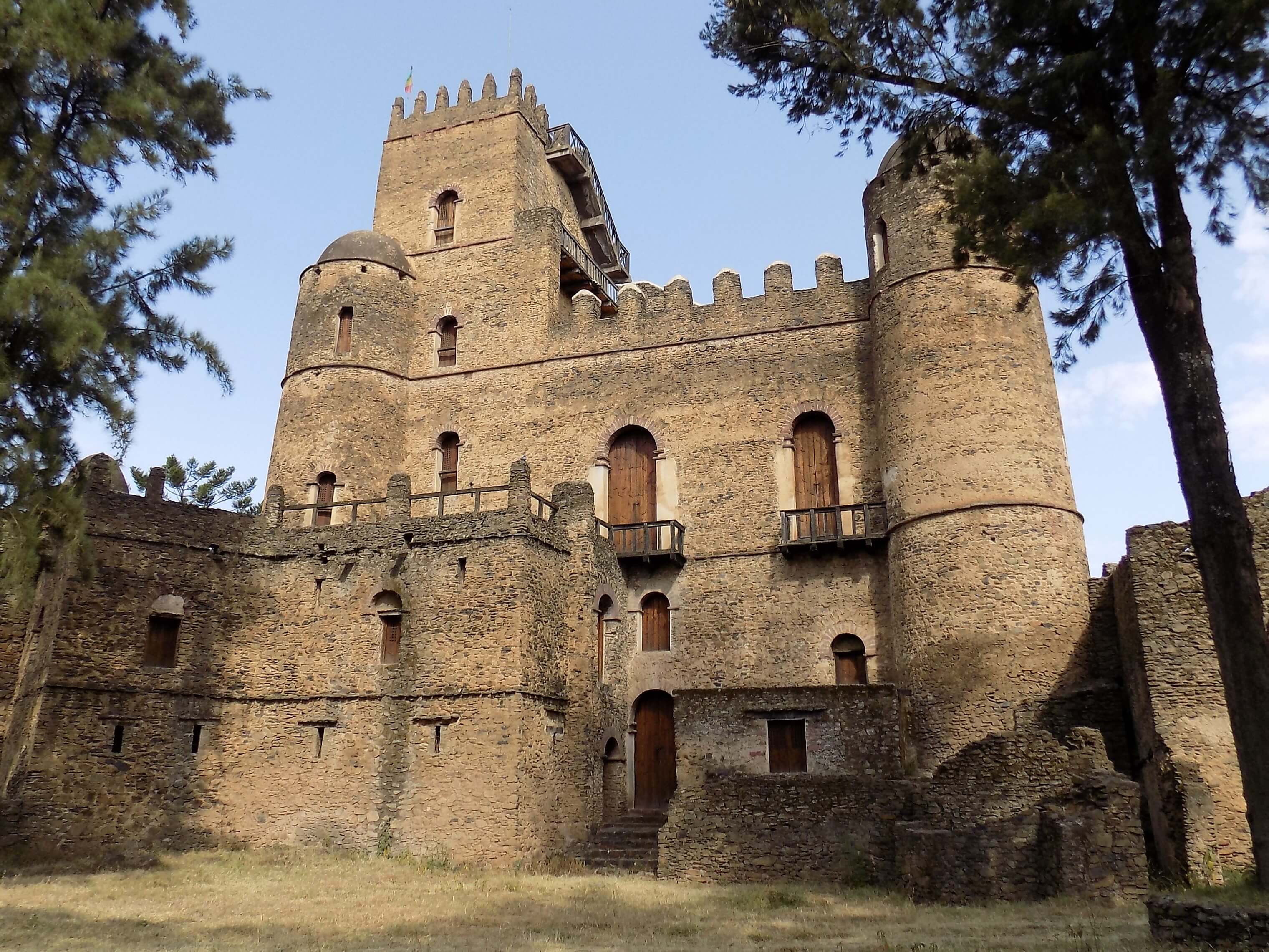
Read my article about Gondar here.
The Danakil Depression
The Danakil Depression is a stunningly beautiful geological phenomenon formed when three tectonic plates diverged in the Horn of Africa. It is the hottest place on earth in terms of year-round average temperatures. At 100 metres below sea-level, it is also one of the lowest places on the planet.
When the remains of our ancestor, Lucy, were found here in 1974, the Danakil Depression gained the more attractive-sounding name of ‘The Cradle of Humanity’.
When we were in Ethiopia, the costs of visiting Danakil were prohibitively high, so we didn’t go. Now, however, it has been made more accessible, so it will certainly feature on our next trip to this fantastic country!
The Monasteries of the Zege Peninsula
Taking a boat trip across Lake Tana to visit one or more of the monasteries on the Zege Peninsula should be on every Ethiopian itinerary. The lake is home to hippos and lots of birdlife. The chances of seeing both during the hour-long journey are very high. Once you reach the monasteries, you will be in awe of the vibrant murals, many of which haven’t been restored since they were created centuries ago. Spend a morning visiting one or two of these buildings and then, unless you are a real obsessive and want to see more of the same, I suggest you repair to a lakeside restaurant for a fresh fish lunch!
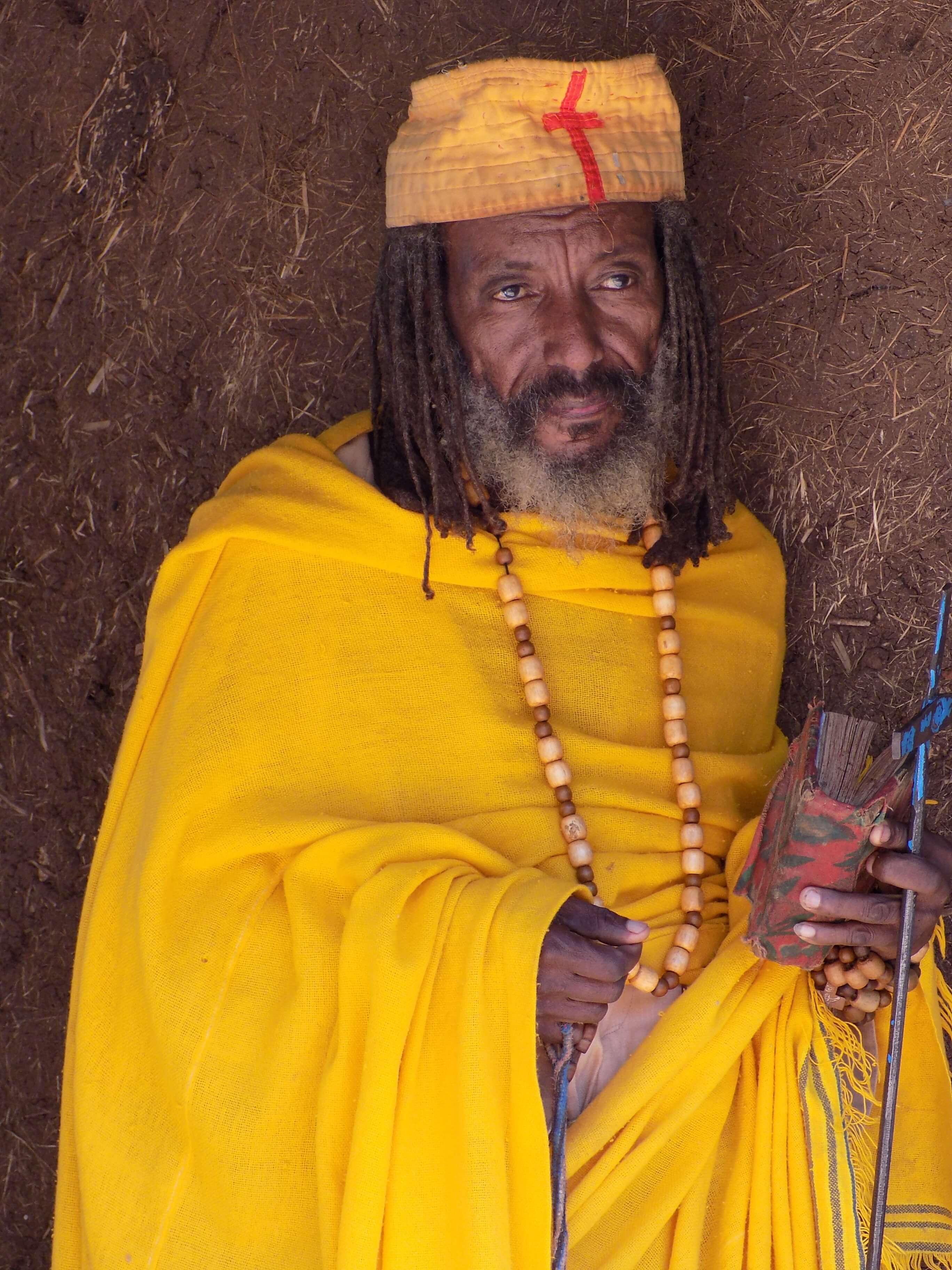
Read my article about the monasteries of the Zege Peninsula.
The Blue Nile Falls
Ethiopia is famous for its natural wonders as well as its man-made ones and they don’t come much more jaw-dropping than the Blue Nile Falls. Even in the dry season when we visited, the noise and power of the water was incredible. The views during the hike to get there were stunning.
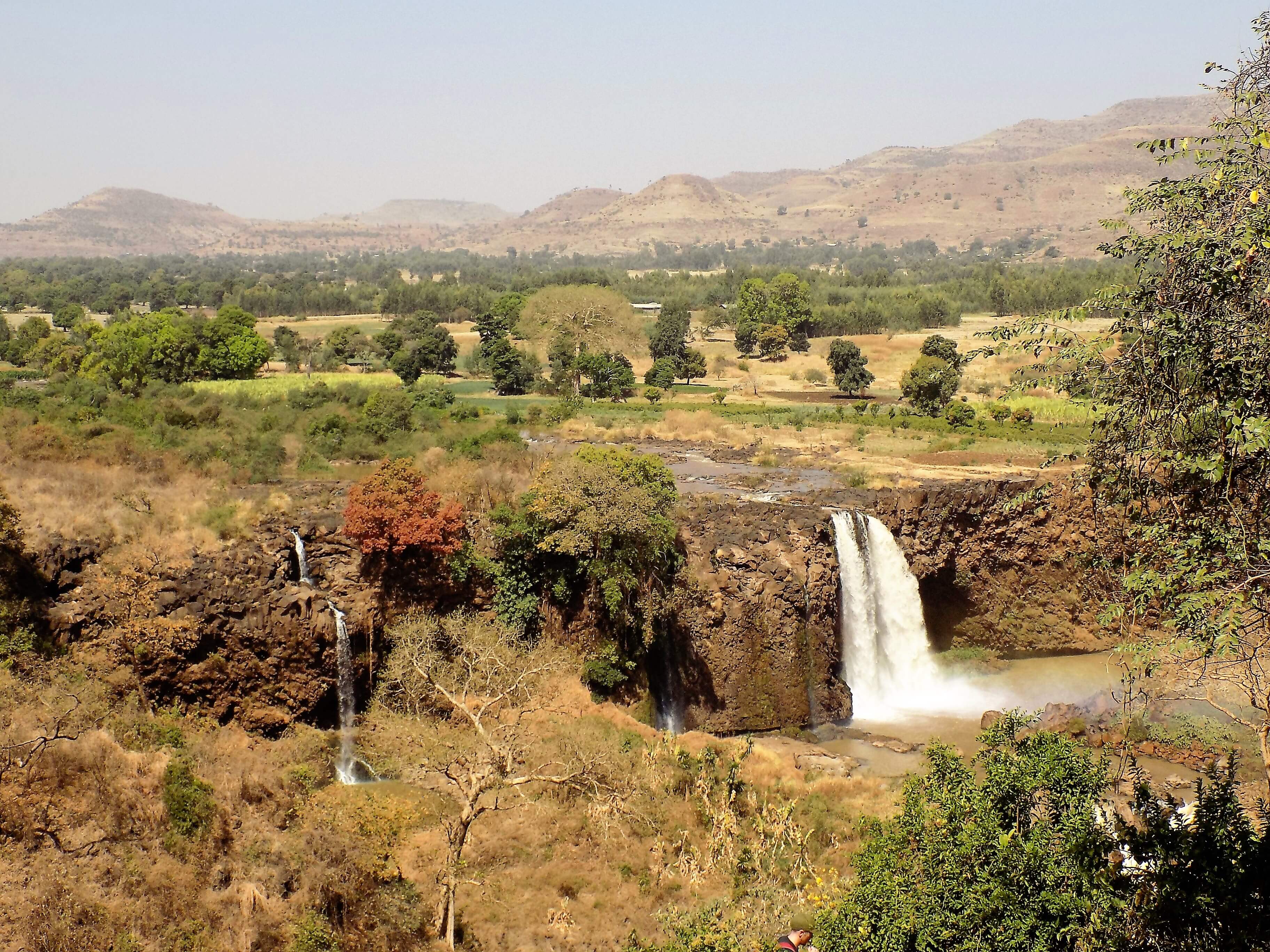
Simien Mountains National Park
The rugged terrain of the Simien Mountains National Park in northern Ethiopia is home to rare Ethiopian wolves, Walia ibex and Gelada baboons, making the area the best place for wildlife spotting, as well as trekking. It is definitely worth spending a few days within the park’s boundary, either staying in the highest lodge in Africa or (my preference) staying under canvas.
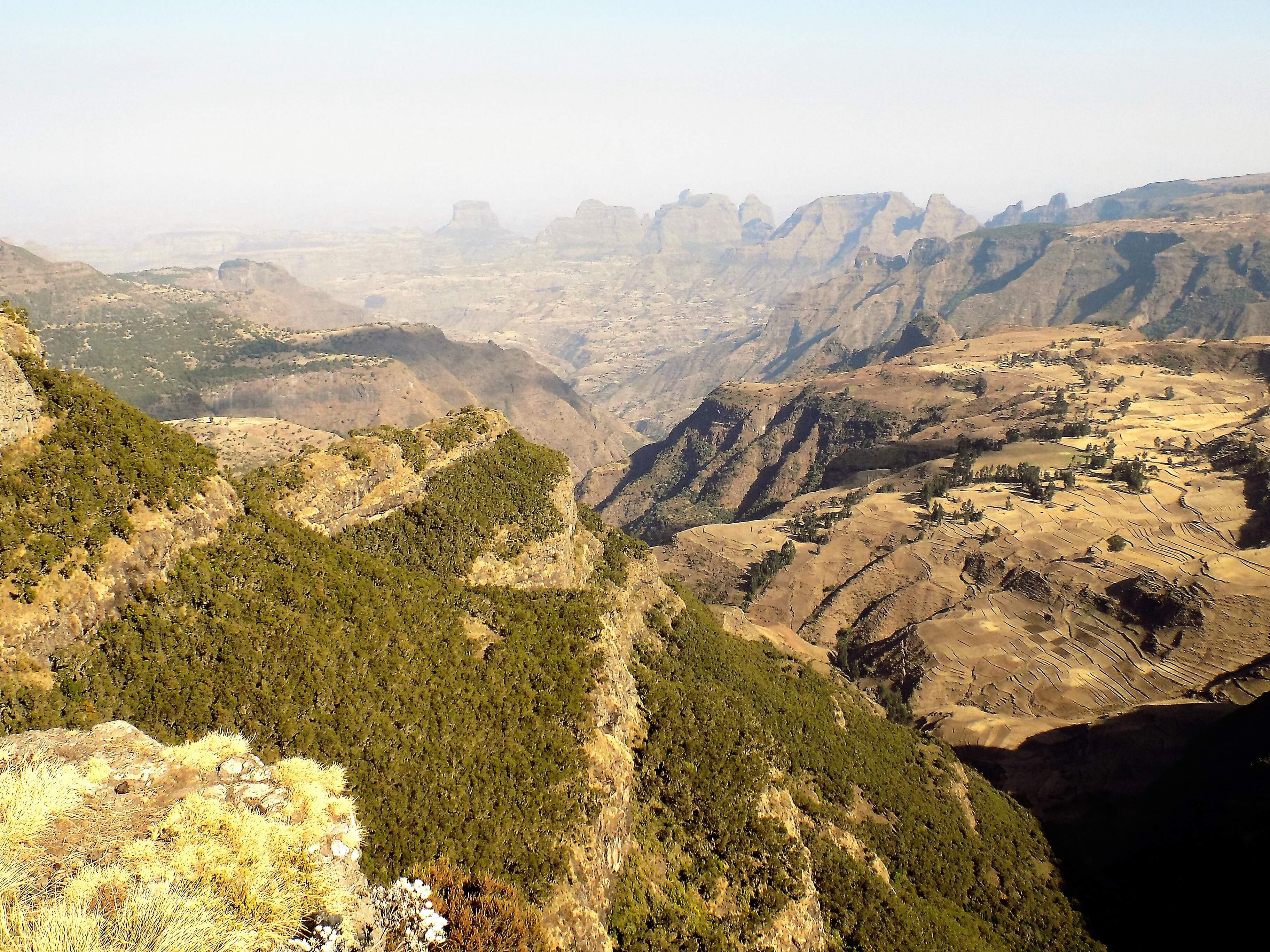
Gorgora
Situated at the northern tip of Lake Tana, the small, dusty town of Gorgora doesn’t feature on many Ethiopian itineraries but I maintain that it should! There are ancient churches with beautiful artwork to explore here, as well as the Kim and Tim Village, a relaxed lakeside camping ground and resort, the perfect place to chill out after a busy tour of Ethiopia.
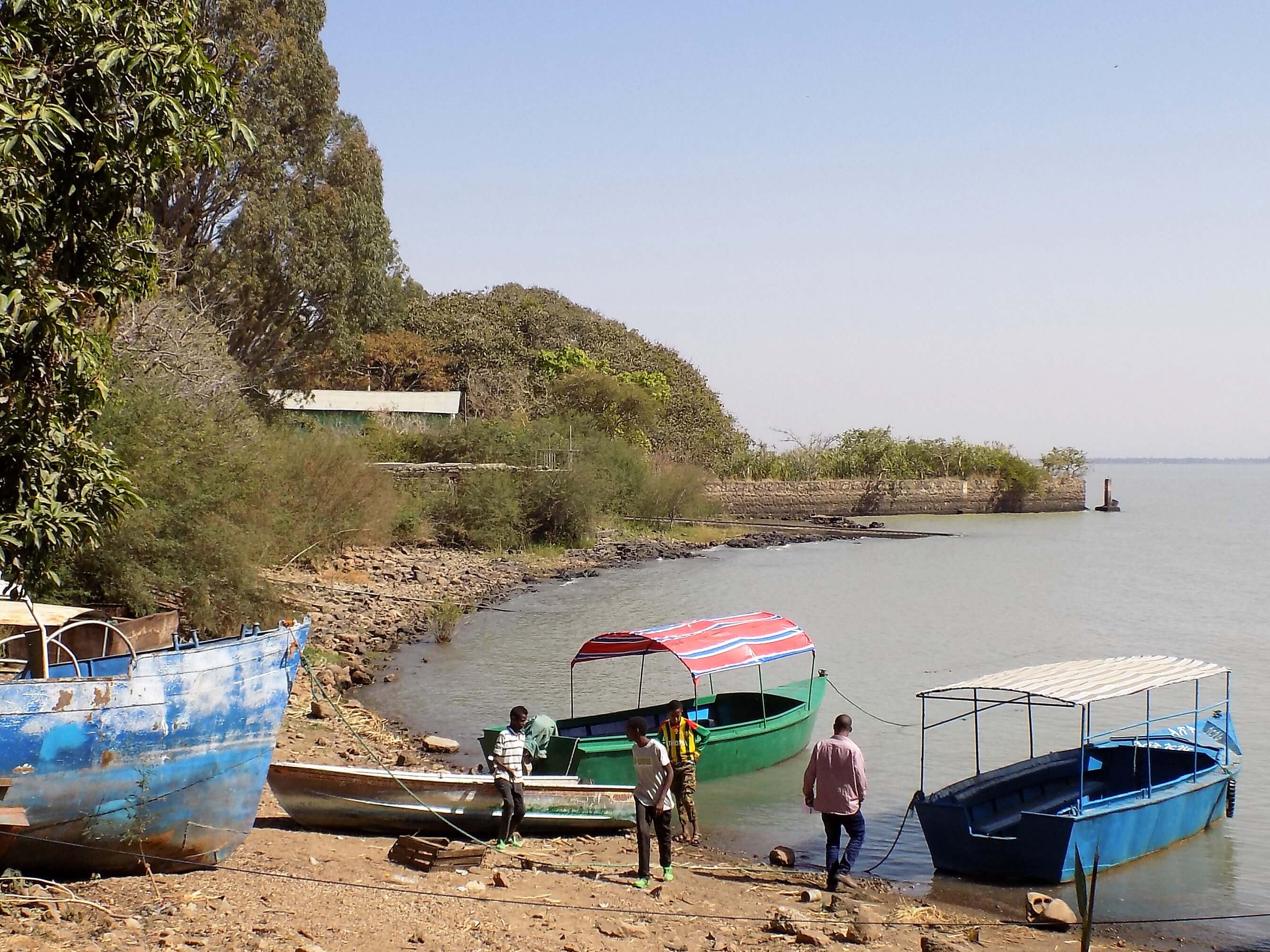
The Rock-Hewn Churches of Tigray
Tigray is home to the largest concentration of rock-hewn churches in Ethiopia. There are more than 100 here, but they are much less accessible than the more famous churches in Lalibela and, therefore, attract far fewer visitors. It’s worth making the effort, though, particularly to the ones like Abreha we Atsbeha near the town of Wukro.
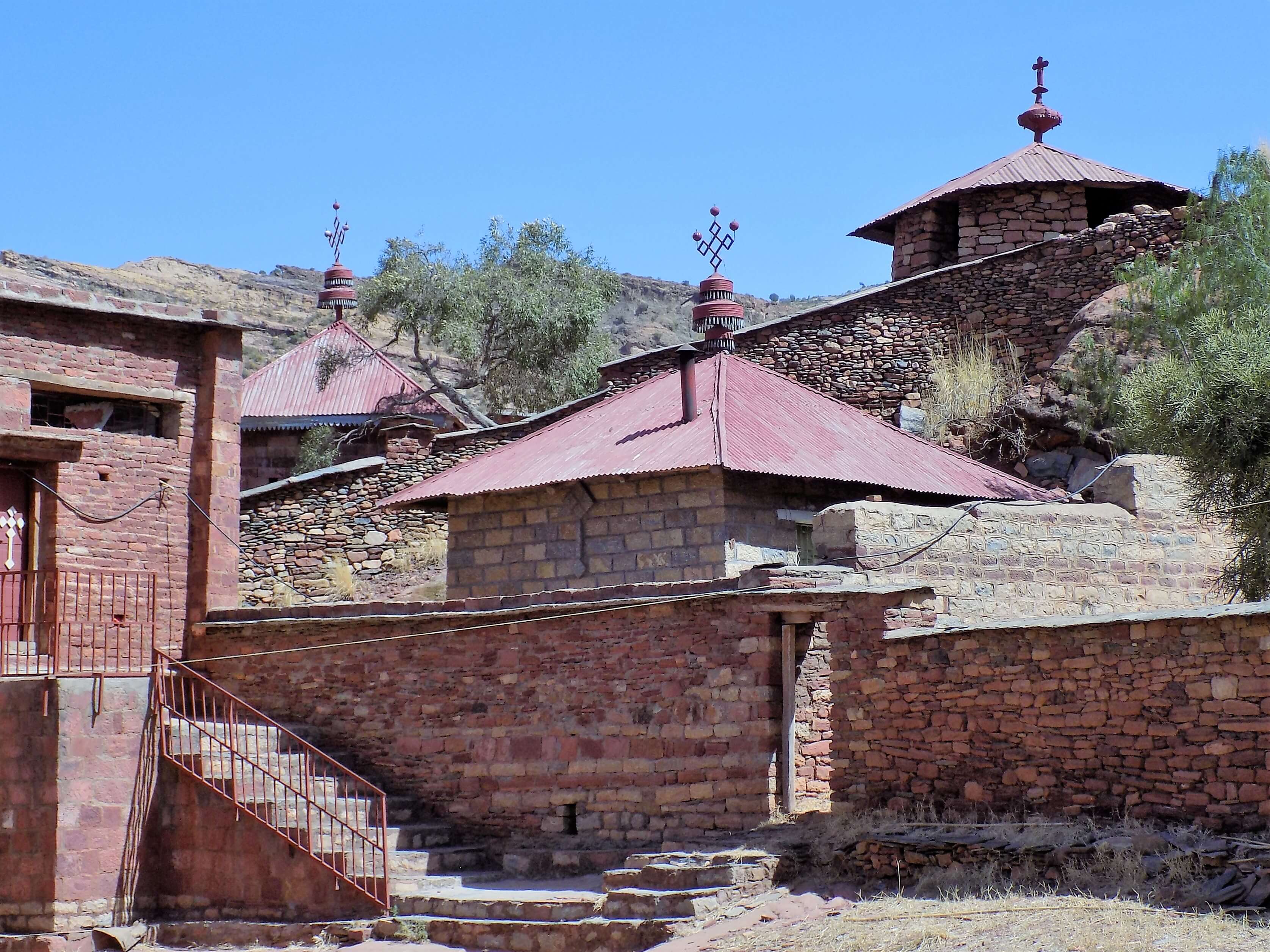
The Omo Valley
Visiting the tribal peoples of the Omo Valley in southern Ethiopia is a controversial topic. When we were in the country, all visits were banned due to fears about exploitation and over-tourism. In addition, several tourists had been attacked and robbed. I hope that, by the time we return to Ethiopia next year, the problems will have been sorted out and visitors will be allowed in for the benefit of local people and without detriment to their traditional way of life.
Bale Mountains National Park
Located 400 kilometres south of Addis Ababa, the Bale Mountains National Park contains a spectacularly diverse landscape. It’s a great place for wildlife and bird watchers. Sunrise at the Sanetti Plateau offers the best opportunity to see the rare Ethiopian wolf. There are many activities to do within the park including horse riding, fishing and hiking.
Ethiopia Tours
While it’s perfectly possible to explore Ethiopia independently, why not book a tour with a local guide? There’s no better way to get under the skin of a place! We use Viator when we want to uncover interesting things to do in a new country. They’re easy to use and book with, and we’ve had some amazing experiences with them.
Search for Flights to Ethiopia
Book your own tour around Ethiopia now!!
If you like what you’ve read, PIN IT!!
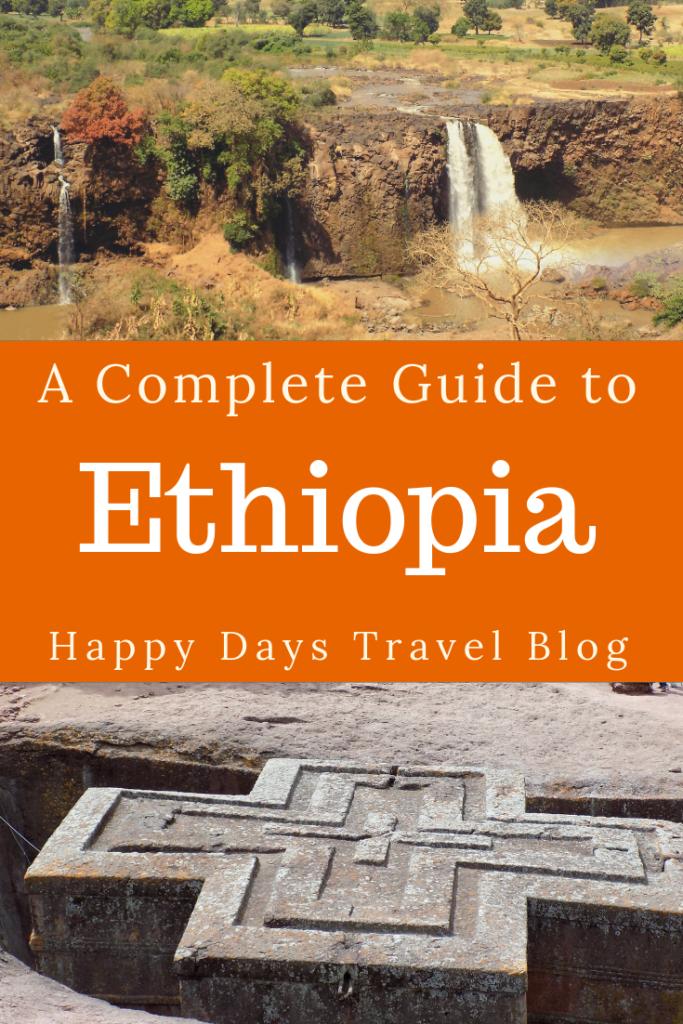
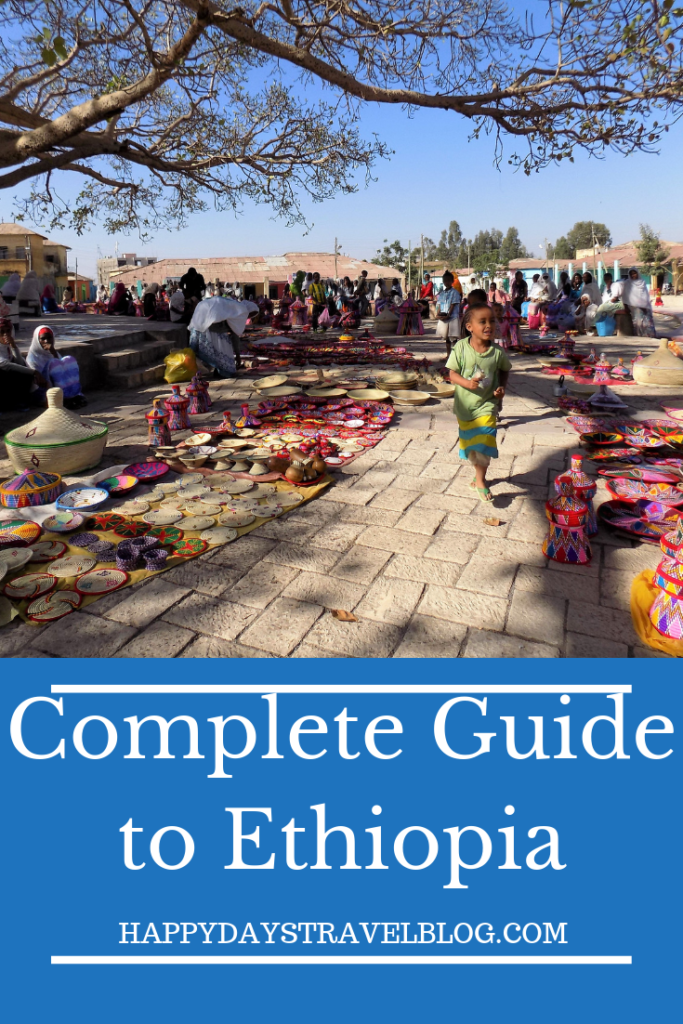
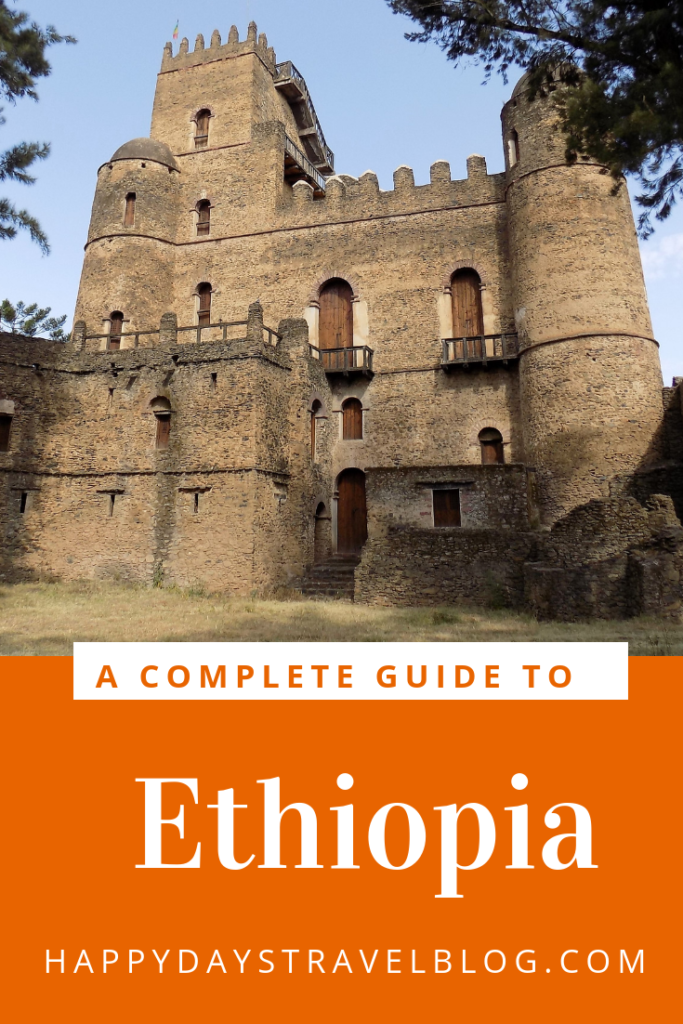
If you’re travelling soon, please use these links!
Are you travelling soon? Use these links when making your bookings. These are the companies we use. It won’t cost you any extra, but we will earn a few pennies to help keep Happy Days Travel Blog going. Thank you!!
- Book your travel insurance with World Nomads. If you are a digital nomad or long-term traveller, try the specialist provider SafetyWing. (Never leave home without protecting yourself, your trip and your belongings!)
- Book your flight with Skyscanner
- Book your accommodation with Booking.com
- Book a tour with Tour Radar
- Book city tours and activities with Viator or Get Your Guide
- Check out our Resource Page for more companies we recommend.
Disclosure: This post contains affiliate links. If you click through for more information, or to make a purchase, it may result in a small commission coming my way. Please note that there is no extra cost to you associated with this. Thank you so much for supporting my site.
Join our mailing list

Sign up to receive our monthly newsletter. Keep up with what we're doing and be the first to receive special offers and insider tips.

